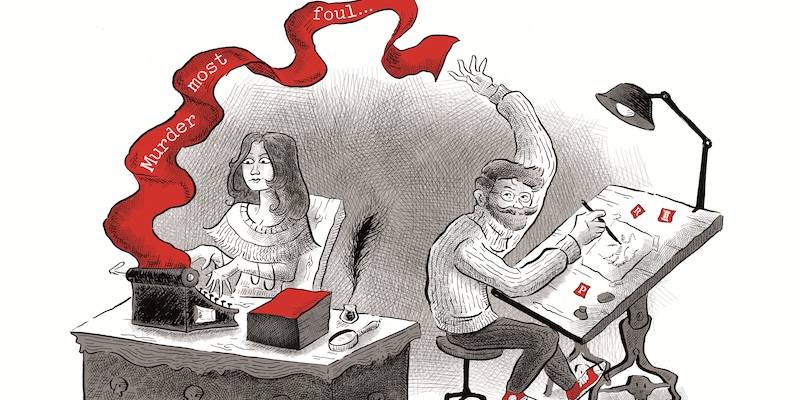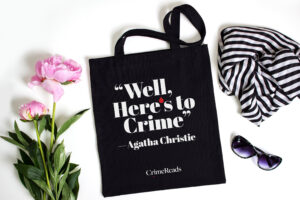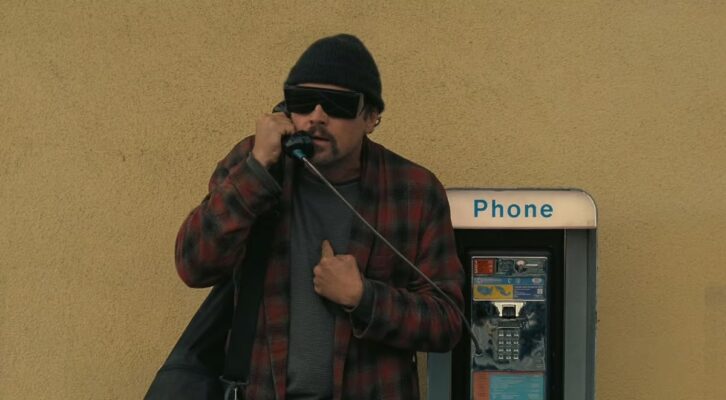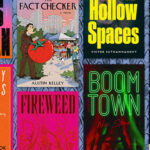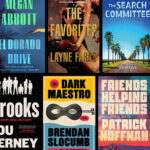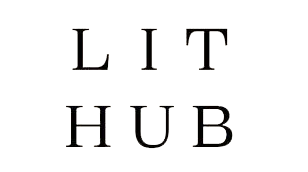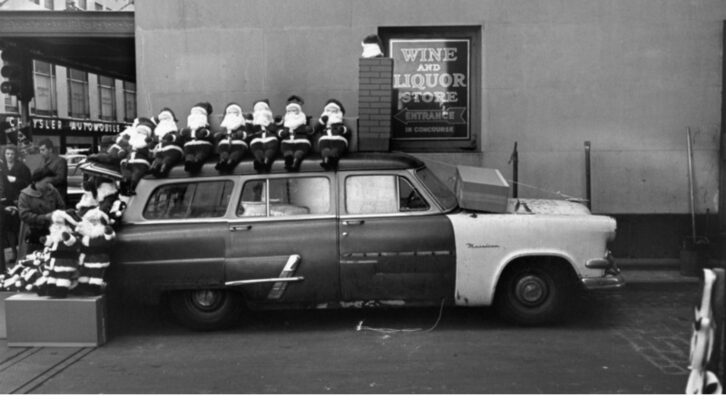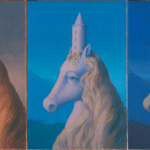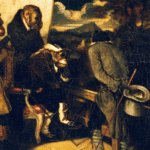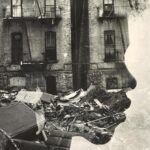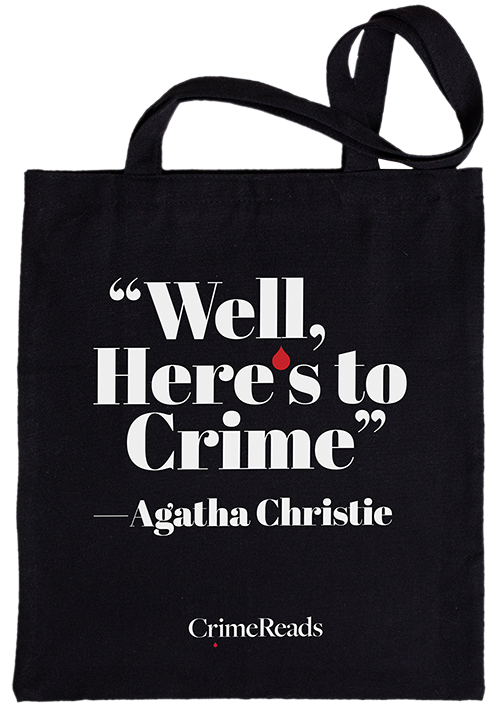We may never know just how many people Maureen Johnson and Jay Cooper saved from getting murdered in a quaint English village, and now the devious duo is back to extend an invitation to readers to help solve a mystery.
London, November 1933. A murder has been announced. Constable Reginald Wilkins is summoned to Finsdale Fine Tailoring, where the owner and proprietor, Mr. Edward Finsdale, hands him an envelope that was dropped through the mail slot; the note contained inside reads: Send police to 19 Tootley Road at once. There has been a murder.
Suspecting the letter to be a joke of some sort, Wilkins nevertheless reports to the aforementioned address only to discover there has indeed been a murder. Famed American novelist Roy Peterson sits dead, slumped in his chair (under which lays a bloody ice pick), and the six other occupants of the townhouse that evening claim to have no knowledge of the crime, let alone how it was done or by whose hand—and despite the fact they were all sitting in the same room at the time of Peterson’s death.
In You Are the Detective: The Creeping Hand Murder (Ten Speed Press; September 16, 2025)—a work that recalls the “dossier” mysteries popularized in the 1930s—the reader is tasked with solving the crime, which has baffled Scotland Yard. There are six suspects in Peterson’s death, all of whom were directed to Tootley Row on the night in question through anonymous notes threatening to expose their various misdeeds should they fail to appear.
The book itself serves as a case file of sorts that includes diagrams, floor plans, interview transcripts, letters, newspaper articles, photographs, and other ephemera that provide clues and context. And, at the very end, an honest to goodness sealed document outlines the solution to the crime. It’s foul play made fair—but only to the most discerning detectives.
The Creeping Hand is the second collaboration between New York Times bestselling novelist Maureen Johnson (the Truly Devious/Stevie Bell YA series) and acclaimed illustrator and author Jay Cooper (The Spy Next Door). The two longtime friends first joined forces for 2021’s Your Guide to Not Getting Murdered in a Quaint English Village—a prose and pictures tutorial on how to survive seemingly “cozy” settings that boast abnormally high body counts. They’ll also match wits and witticisms again in a second You Are the Detective book.
Now, Maureen Johnson and Jay Cooper demystify their creative collusion—albeit separately, as all good interrogations—err, interviews, rather—isolate the subjects….
*
John B. Valeri: “Dossier” murder mysteries were at their peak popularity nearly a century ago before falling out of style. What was your introduction to these books and how did that history inspire You Are the Detective: The Creeping Hand Murder? In what ways did you endeavor to put a fresh spin on a classic construct?
Maureen Johnson: I was a mystery reading child. I read everything I could get my hands on. My mom found the reprints of the dossier mysteries and gave two of them to me as a Christmas present when I was a kid. I found them on the back of a shelf a few years ago when cleaning something out at my parents and immediately re-read them, then I found the other two (there were four Dennis Wheatley ones) and ordered them and was obsessed all over again.
After Jay and I did Your Guide to Note Getting Murdered in a Quaint English Village (which was born out of a CrimeReads essay), we really wanted to make something else together. For a year, I wasn’t sure what that was. It occurred to me one day when I was walking the dog. I think I said it out loud, like in a commercial when someone has a thought. “We need to make a dossier mystery.”
JBV: The challenge of a mystery—and particularly one where the reader is overtly tasked with being the detective – is to play fair with the audience while also managing to (hopefully) confound them. What was your approach to plotting a whodunit in which the clues were immediately present yet perhaps only apparent in retrospect?
MJ: That’s always the challenge. When I write mysteries, I work from the center out. I make a little clockwork–starting with the reason, then building out the crime. I pull threads from there and work backwards in time. I think people should write in whatever way they write, but for me, knowing all the facts about the case–really building out the entire scenario and walking around in it–that’s how I do it.
JBV: You use early 1930s London as a backdrop (which happens to coincide with the Golden Age of Detective Fiction). What was the appeal of this time period and place in the telling of this story specifically—and how do such things inform the cast of characters that make up your victim and suspects?
MJ: It’s the classic! It’s Golden Age. Also, there are two very practical reasons, aside from those. One, my husband is English. I know London well. I spend a lot of time there. I’ve written other books that take place there, so I have done years of historical research. Two, old cases mean this isn’t solved by DNA. This is the time of fingerprints, scraps of paper, and footprints. This is analog and tactile.
JBV: Tell us about your creative partnership with Jay Cooper. How much of the collaborative process took place during the development of the story versus after the fact—and in what ways do his contributions influence your own vision? Also, what of his artistry not only speaks to you personally but enhances the words on the page—and, in this case, the presentation of the mystery?
MJ: Poor Jay. He is a kind and patient man, as well as being brilliant. I had to build the frame–the case. We did this using an online whiteboard (Miro, if such things interest you). After I worked it out and sketched out the story, I started putting a chart of stickies up on the board.
Jay would draw what I wrote out. I’d look at what he did, and his work would shape what I was making, so I would tag notes on the board and he would draw again. And again. And again. Until it was exactly what we needed. We needed to be precise, because people are meant to scrutinize these images. He did it over and over and never complained. Again, he is kind and patient.
Here’s a zoomed-out picture of our board. There’s a graph of the story, and frames of character, clue, and location art. Jay would often do various sketch versions of the art and we would discuss which ones to use and develop. As we got down to the finals, we removed the sketches from the board. This was the final iteration, when we were finishing up. All of those little bubbles are notes back and forth.
Then we got pages and went over them again and again.
JBV: You recently announced Stevie Bell’s return in The Velvet Knife (a Truly Devious novel). What are you at liberty to tell us about that project—and any others you may have in the works?
MJ: Right now, I am feverishly finishing up The Velvet Knife, which picks up exactly where Nine Liars (the previous Stevie Bell book) left off. This one takes place in New York City and features cults. Which no one joins, of course. Directly after that, another Stevie Bell book and another You Are the Detective! This one is just the first!
And now Jay Cooper steps in to discuss the subtle art of murder….
JBV: You first worked with Maureen on Your Guide to Not Getting Murdered in a Quaint English Village. How did that collaboration arise—and what about the partnership, and Maureen’s unique skillset, made you want to continue working together?
Jay Cooper: Well, the truth is, Maureen and I have been friends for years: we dated in college, and literally moved to New York together! We both have a love of anything antiquated and a shared wicked sense of humor…but we’d never thought to collaborate professionally, as I work mainly as an illustrator for middle grade books and lower.
There was a kismet moment, however: she was on the lookout for an illustrator for Murder Guide, and I had just sent out a New Year scroll I’d done up in Edward Gorey fashion, and it was an AHA, LET’S ACTUALLY DO A THING TOGETHER kind of a moment. It was such a fun collaboration that we thought, why not do another? Working with friends is the best sort of work.
JBV: This new book is a whodunit that casts the reader in the role of detective. Consequently, your illustrations don’t just enhance comprehension and context (as if that’s not enough!) but provide clues to the mystery’s solution. In what ways did this challenge your process—and how did it evolve as the story took shape?
JC: Ah, this is a great question, John! The Murder Guide was really a list, and the illustrations only loosely related to the text. Here, precision was crucial. Some little whimsical addition on my part could throw the whole thing off.
For me, it was a learning curve: I would draw some plates overnight and upload them to a shared digital whiteboard. Maureen would scrutinize them like a detective, and compare to maps or text and would invariably indicate that a window was where it shouldn’t be, or I’d put the stairs in the wrong direction on a map….
Because all these details had to be perfect, you had to be really zen about it. I was comparing it to putting together a complicated piece of IKEA furniture. All these grommets and bits have to fit snugly, and sometimes you find out that three steps back you used the wrong sort of screw, or turned something the wrong way. You just have to methodically go back and retrace your steps. Or else the whole thing might fall apart.
JBV: Tell us how a story’s time and place influence your approach to visual imagery. How did you familiarize yourself with the aesthetic of 1930s London and what liberties did you allow yourself in the rendering?
JC: Here’s where you find out how crazy I am.
Okay. So this book is full of poison pen letters that each suspect received…but I’m LOUSY at hand-lettering…and a font was going to look so fake I didn’t even consider it for a moment. I wanted the letterforms to be as accurate to the time as possible….(I’m a real stickler for that in my Broadway work), so I spent days combing every antique store for period accurate ephemera: music sheets, almanacs, magazines…and for that added touch I even purchased some copies of the London Times from the ’30s and had them shipped stateside.
And then (mind you, I’m a book collector, so this part was especially difficult), I cut them to shreds like a cold-blooded murderer and collaged the actual poison letters and scanned them. I still have nightmares. (I did preserve anything that felt truly rare—for instance, a theater magazine with an essay from Amelia Earhart three years before her fatal flight was spared.)
And I bought vintage lighters, matchbooks, keys, coin purses, etc. so I could be roughly sure of how they related to each other in size. I did take a few liberties, but I’ll take those secrets to the grave!
JBV: Illustration is an art that is often taken for granted. Who were your earliest, and greatest, influences and how can they be seen in your work? Also, in what ways does bringing somebody else’s vision to life require versatility of style – and how do you manage to satisfy those requirements with staying true to your own creative ambitions and impulses?
JC: Well, obviously Edward Gorey is a MASSIVE influence on me, and the most evident in these books. Maurice Sendak, Mercer Mayer, Norman Bridwell (his monster books), Charles Addams, and J. J. Sempé are artists that I devoured growing up. Most can’t be seen in my work stylistically, but I hope a shared odd sense of humor does….
Also, I’m the biggest comics nerd you’ll ever meet. I could list a thousand comic artists here, but we haven’t got all day!
Writing and illustration is a bit of a duet, and one often inspires the other in unexpected ways.As for bringing someone else’s vision to life goes versus my own ambitions: writing and illustration is a bit of a duet, and one often inspires the other in unexpected ways. If we’re doing it well, we’re not stepping on toes. But honestly, when it comes right down to it, I’m just doing my best to visually convey the ideas and the tone of the author.
JBV: Leave us with a teaser: What comes next for you—both as a writer and illustrator?
JC: I’m finishing up final art for the fourth and last The Last Comics On Earth graphic novel as I write this, written by Max Brallier and Joshua Pruett (it’s a spin-off of the middle grade series, The Last Kids On Earth), I’ve been scripting some humorous, non-fiction graphic novels recounting the “histories” of the Loch Ness Monster and Bigfoot (I read fourteen books on Nessie last Christmas while I was off), I’m about to start final art on another graphic novel for kids titled Super Atomic Wombat Girl, and there will of course be another You Are the Detective book in the future!
When I’m not making books, I’m working on a number of Broadway shows as an adman. I keep busy, John. No idle hands here.
***

